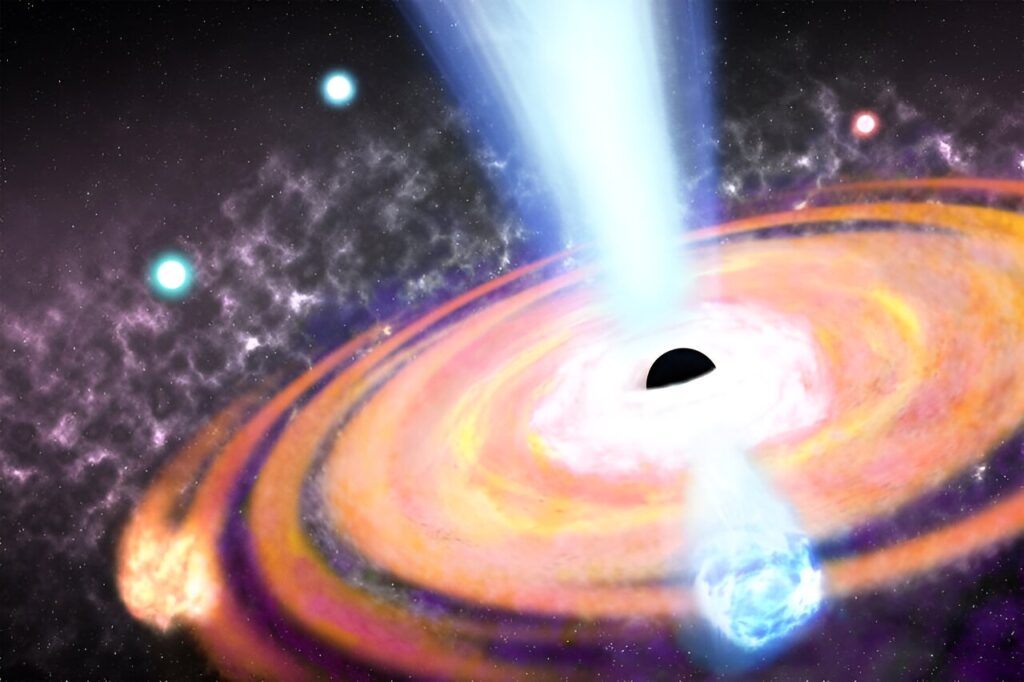The evolution of galaxies and the black holes as their cores are closely related. But which of them got formed first? Scientists claim to have figured this out and recreated the two-stage development of the early Universe.

The history of the early Universe
Black holes not only existed at the dawn of time, they gave birth to new stars and accelerated the formation of galaxies, according to a new analysis of data from the James Webb Space Telescope.
These discoveries overturn theories about how black holes shape the cosmos, challenging the classical understanding that they formed after the first stars and galaxies. Instead, scientists argue that these objects existed within the first 50 million years of the Universe’s life — a rather short period compared to its overall history of 13.8 billion years.
We know that supermassive black holes exist at the centre of galaxies, including the Milky Way, but it has recently been discovered that they were present even at the beginning of the Universe and were almost like bricks or seeds for early galaxies. They acted as giant amplifiers of star formation.
Distant galaxies from the very early Universe, observed by the James Webb telescope, look much brighter than scientists had predicted and reveal an unusually large number of young stars and supermassive black holes.
The first galaxies and black holes
It is generally believed that black holes formed after the collapse of supermassive stars, and galaxies after the first stars illuminated the dark early Universe. But an analysis by a team of scientists suggests that black holes and galaxies coexisted and influenced each other’s fate as early as the first 100 million years.
Black holes are areas in space where gravity is so strong that nothing can escape its pull, not even light. Thanks to this force, they generate powerful magnetic fields that create violent storms, ejecting turbulent plasma and ultimately acting as huge particle accelerators. This process, according to the scientists, is likely the reason why the Webb telescope detectors have found more of these black holes and bright galaxies than scientists expected.
How was star formation accelerated in the first galaxies?
The team of Joseph Silk, the author of the study, predicts that the young Universe had two phases. During the first phase, high-speed outflows from black holes accelerated star formation, and then, in the second phase, the outflows slowed down. Several hundred million years after the Big Bang, gas clouds collapsed due to magnetic storms of supermassive black holes, and new stars were born at a rate far exceeding that observed billions of years later in ordinary star systems.
According to astronomers, star formation slowed down because these powerful outflows went into a state of energy conservation, reducing the amount of gas available for star formation in galaxies.
The team of astronomers hopes that future observations on the James Webb telescope with a more accurate count of stars and supermassive black holes in the early Universe will help confirm their calculations. Silk hopes that these observations will also help scientists gather more clues about the evolution of the Universe.
Source: phys.org

